Throwback Thursday is when we trawl through the That's archives for a work of dazzling genius written at some point in our past. We then republish it. On a Thursday.
By Andrew Chin
The resounding success of the Beijing Olympics heralded the dawn of a new age for sports in China. Leagues and organizations rushed in from around the globe, eager to tap into a potential goldmine of new fans, sponsors and investors.
Blazing the trail was the National Basketball Association (NBA). The league has held nearly 20 exhibition games in the country since Yao Ming’s Houston Rockets took on the Sacramento Kings in 2004.
“It’s very important that our fans get an absolute authentic NBA experience at the game,” says NBA China CEO David Shoemaker. “In 2004, the facilities were nowhere near that level. We had to ship so much of the infrastructure into China from the floor to the benches.”
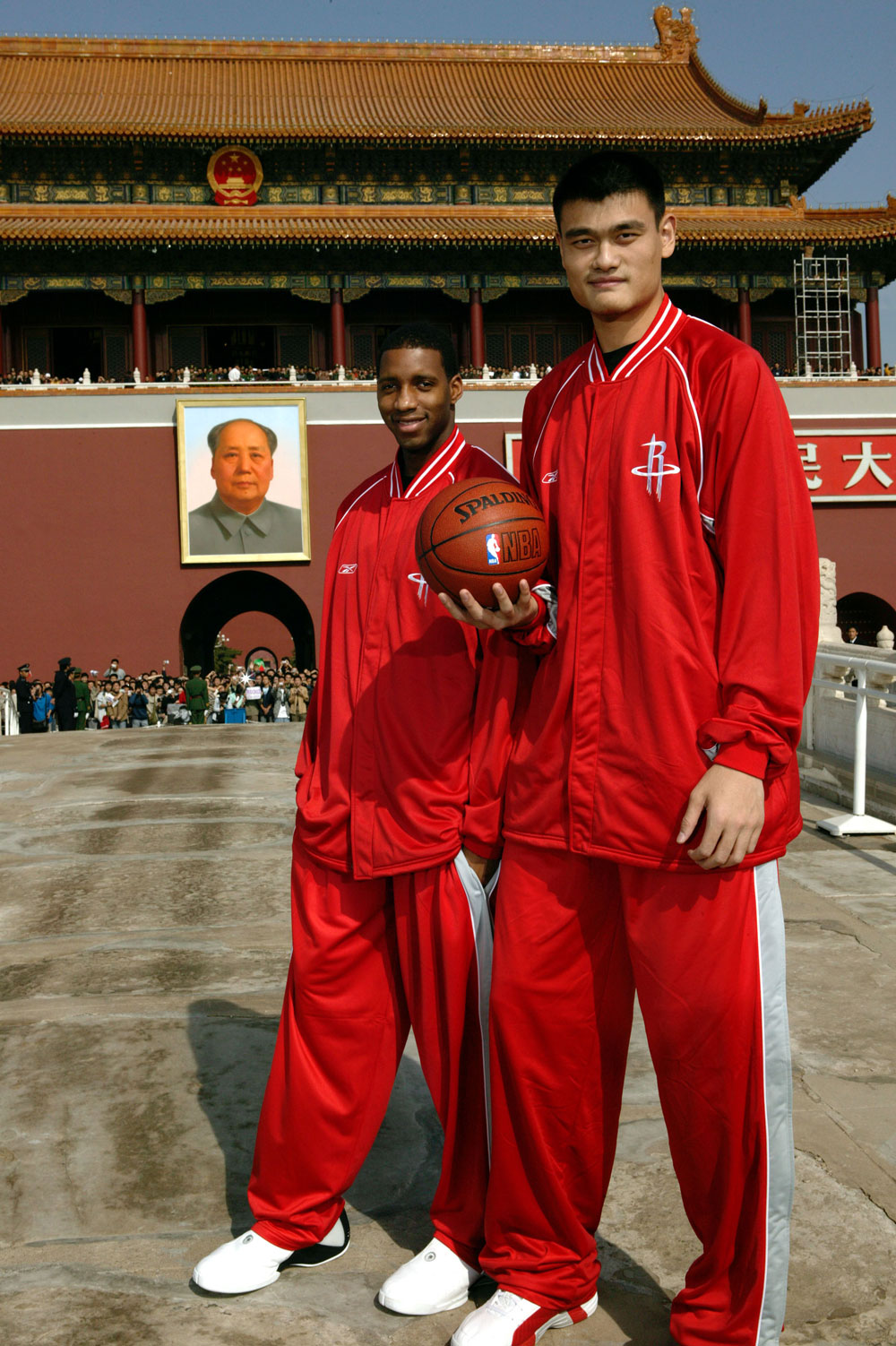
Yao Ming and Tracy McGrady of the Houston Rockets visit Beijing in 2004
Much has changed in a decade. Now the NBA plays in buildings of their creation, partnering with AEG to build state-of-the-art arenas across the country, including the MasterCard Center in Beijing and the Guangzhou International Sports Center, on par with the Staples Center in Los Angeles.
It’s part of a building boom that included opening the first NBA Center in Tianjin in 2015 - a four floor behemoth with an NBA-style basketball court, a fitness center, an NBA themed restaurant where fans could watch games, an NBA store and a basketball-themed play zone for kids.
In the summer of 2013, the Wukesong Baketball Park opened in Beijing, complete with 11 full-size courts and one half-court built to international standards. Both an effort for the league to tap into the commercial possibilities of a rabid fanbase, while contributing to the sport’s grassroots development.
"I used to say that our NBA players were like rock stars in China, but I realized that was understating it."
— NBA China CEO David Shoemaker
Such is the power of the NBA. The numbers behind their popularity in China were staggering in 2014: more than 70 million followers on their Sina and Tencent microblogs; 1.3 billion page views of NBA.com/china; 4.1 billion video stream views of games and highlights; and the most popular online sports game, with NBA2K Online counting over 20 million registered users
In 2014, their games broadcast live four times a week on CCTV averaged nearly six million viewers. They’ve created an eight-day Chinese New Year celebration that consists of 23-live games with participating teams paying tribute to the league’s Chinese fans. In 2013, over 116 million viewers tuned in.
No wonder NBA Commissioner Adam Silver is publicly considering moving the occasional game to a 10am US start-time in order to tap into the Chinese primetime market. There’s even more room to grow, with over 300 million Mainlanders playing the sport, the equivalent of America’s total population.
“It would be nice to have a Chinese player in the NBA, but I don’t think it’s critically important,” says Silver. “There’s certainly no lack of support for our non-Chinese players in the league when they travel here in the off-season.”
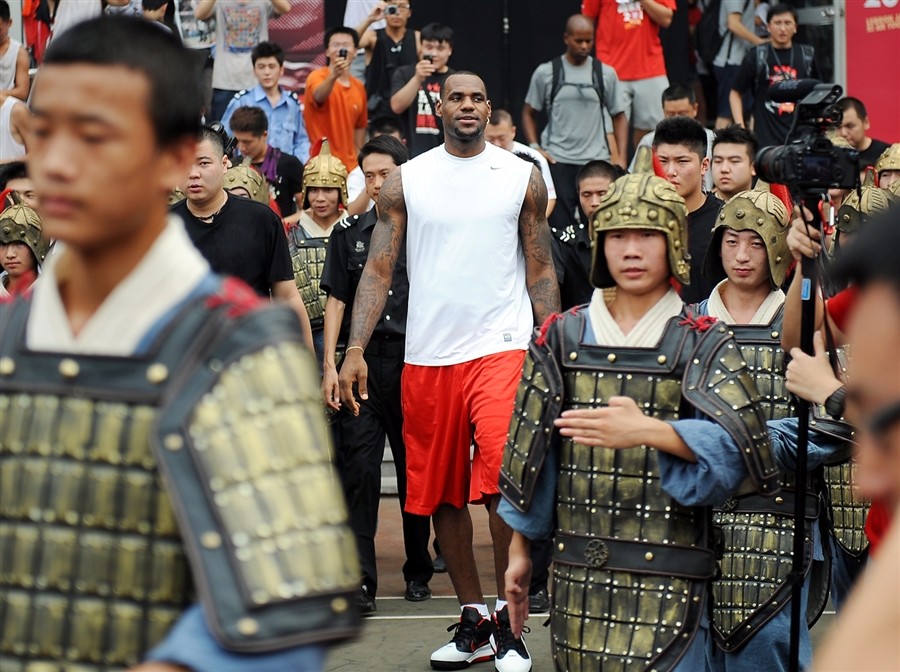
LeBron James in China in 2011
Indeed, NBA stars are increasingly household names and a China circuit has developed for players visiting to boost their brand and business interests, while participating in occasionally surreal hijinks; a week after dramatically announcing his return to his hometown Cleveland Cavaliers, four-time MVP LeBron James was in Beijing starting his annual China tour… and duetting with renowned pianist Lang Lang. Meanwhile, two-time NBA champion Ray Allen tweeted his growing disbelief at the number of birthday cakes he received while appearing on Chinese TV dressed as an archer.
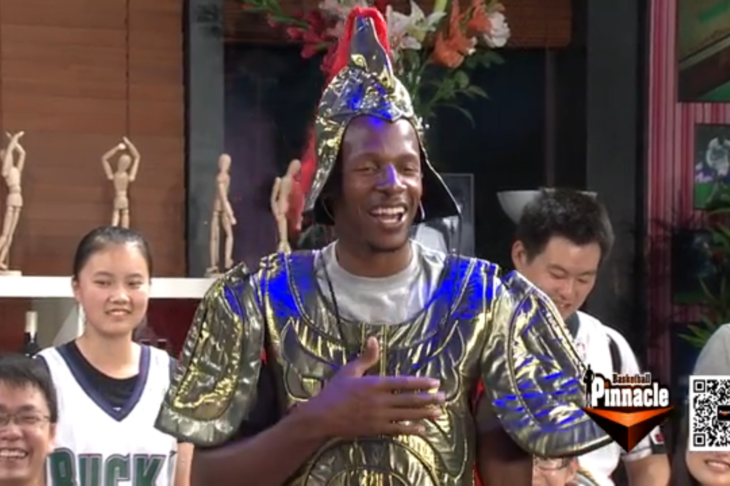
Ray Allen on Chinese TV in 2014
Nike debuted the world’s first full-size LED basketball court, ‘The House of Mamba,’ in Shanghai in 2014. The technological marvel had built-in artificial intelligence onto the floor, equipped with motion sensors tracking player’s movement, serving as a guide for players to practice exercises based on Kobe Bryant’s methods. When he saw it, the typically loquacious Bryant was speechless, admitting, “I didn’t know something like this was even possible.”
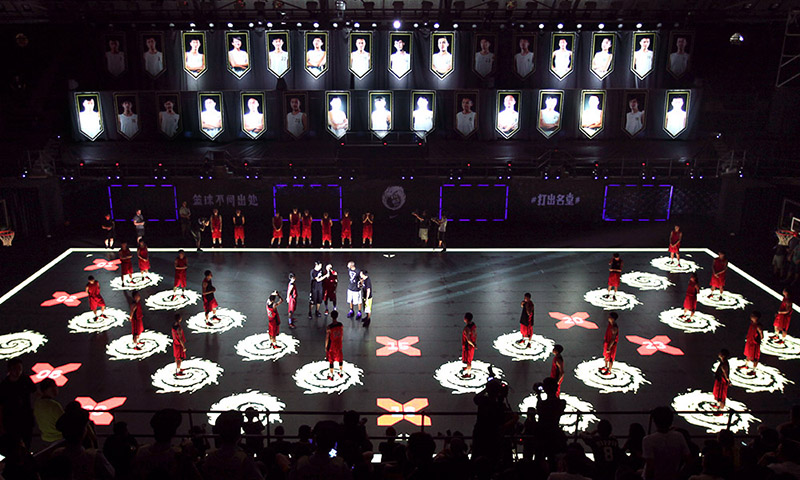
Nike debuted the world’s first full-size LED basketball court, ‘The House of Mamba,’ in Shanghai in 2014.
Chinese shoe company Li Ning poached three-time NBA champion Dwyane Wade from Nike’s Brand Jordan, signing him to a groundbreaking 10-year deal, reportedly worth USD10 million a year. They bet his signature Way of Wade shoeline would catapult them onto the global market. Meanwhile, perennial All-Stars Carmelo Anthony and Dwight Howard popped up on the big screen, making cameos in Sherwood Hu’s 2013 film Amazing, essentially Tron remixed with basketball.
* * *
“Our game’s never been more popular, but some amount of credit goes to basketball having been played here for 100 years,” NBA China CEO Shoemaker says. “There’s a long love affair that Chinese fans have had with basketball.”
Four years after the sport’s creation, YMCA missionaries brought the game to Tianjin in 1895. By 1935, it was declared a national pasttime, with China fielding a competing team in the following year’s Olympics.
With each generation, the game became more embedded in the country’s cultural fabric. In the 1920s, it was popular in urban centers like Shanghai, its courts a haven for revolutionary activity. During the Long March, Communist officials and soldiers played the game to boost solidarity and spirits. While sports like baseball were denounced as “bourgeois indulgence,” basketball thrived under Mao’s rules of friendship first, competition second, with players apologizing after fouls.
In 1979, the Washington Bullets were invited to the country by Deng Xiaoping. Hundreds of millions tuned in to watch them beat the Shanghai Sharks, a team featuring Yao Ming’s father, Yao Zhiyuan.
The People’s Liberation Army (PLA) founded the Bayi Rockets in the early 1950s, who became a powerhouse, racking up 34 national titles and seven of the first eight Chinese Basketball Association (CBA) championships. While the game grew on the backs of early titans Wilt Chamberlain and Bill Russell in America, Chinese fans were cheering on their own star in 7’4” Mu Tiezhu, who spurred China to regional dominance. Its national team has won 16 of 22 FIBA Asian Championships, since its inception in 1975.
The US and Chinese basketball worlds collided when the Deng Xiaoping invited the then-NBA champions Washington Bullets to the country in 1979, months after the normalization of relationships between China and America. The first trip by a professional sports team to the Mainland was a groundbreaking success, with hundreds of millions watching on TV as the Bullets beat the Bayi Rockets in Beijing and the Shanghai Sharks on their home court, a team featuring Yao Ming’s father Yao Zhiyuan.
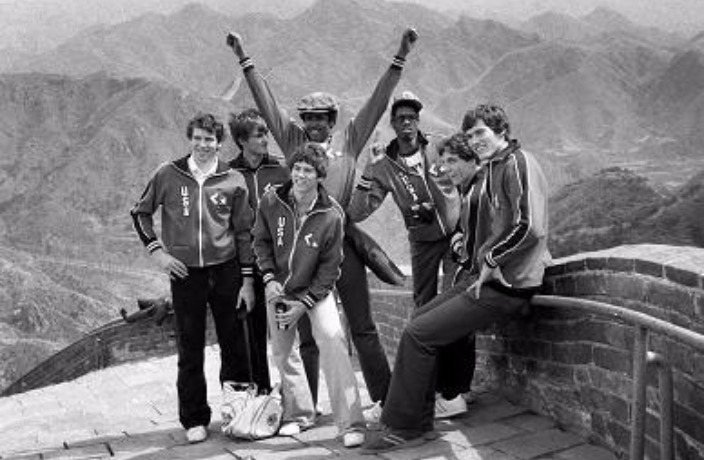
In 1979, the NBA's Washington Bullets made a historic visit to China, becoming the first professional US sports team to be invited to the country
In 1985, the NBA returned the favor by inviting the Chinese national team to America for a series of exhibition games. And the league’s relationship with the Mainland was cemented in 1987 when then commissioner David Stern showed up to CCTV with a bag of video cassettes, despite the station’s executives not knowing who he was.
“He showed a lot of foresight and deserves a lot of credit for the growth of the game in China,” Shoemaker says. “He convinced CCTV executives that NBA was worth showing to hundreds of millions of fans across China. It was such an important starting point and has proven to be true.”
The 1987 NBA All-Star game was the first to be aired. In 1994, they started showing all of the NBA Finals games live. A young Yao Ming would tune in to watch his idol Hakeem Olajuwon lead the Houston Rockets to their first NBA championship unaware that, in less than a decade, he would be his successor.
* * *
While CBA standouts Wang Zhizhi and Mengke Bateer were the first to enter the league, the NBA’s popularity exploded when Yao was drafted Number One overall in the 2002 Draft. The 21-year-old had just led Shanghai to their first (and to date only) CBA title, averaging 38.9 points and 20.2 rebounds a game in the playoffs.
“I remember when Yao got drafted and how huge a deal that was,” recalls NBA player Nik Stauskas. “He was popular among Chinese people even in the Toronto area and sparked a tremendous amount of interest in Chinese people for basketball.”
When Kobe Bryant saw the first full-size LED basketball court in Shanghai he was speechless, admitting 'I didn’t know something like this was even possible.'
While an entire nation cheered on their first transcendent basketball star, they were also falling in love with his biggest foils: the Los Angeles Lakers championship duo of Shaquille O’Neal and Kobe Bryant.
In 2006, Shaq became the first NBA player to sign a shoe deal with a Chinese company, Li Ning. Others followed. As well as the Dwyane Wade-Li Ning deal, All-Stars Rajon Rondo and Kevin Garnett signed to Anta, while Peak’s roster included All-Stars Tony Parker and Kevin Love.
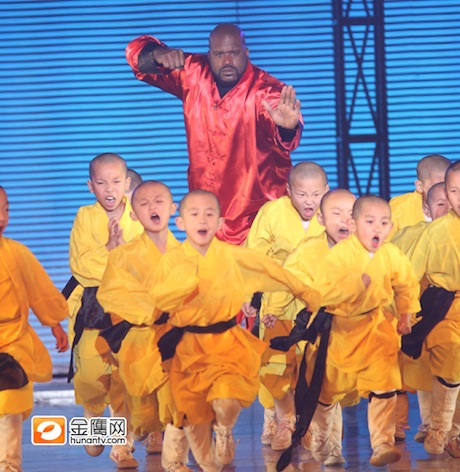
Shaquille O'Neal on Chinese television
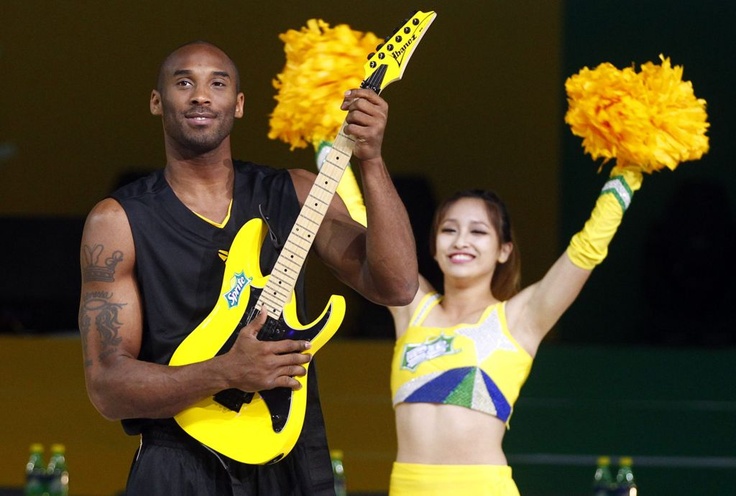
Kobe at the Sprite Celebrity Game in 2012
Meanwhile, Kobe is a basketball deity in the Mainland; his trips often require riot police to fend off frenzied crowds. Bryant pays back the adulation by frequently going off-script. In the summer of 2014, he challenged a university student to a game of one-in-one in Shanghai, his first public basketball action after sitting out the year prior with a torn Achilles tendon.
“I used to say that our NBA players were like rock stars in China, but I realized that was understating it,” says Shoemaker, recalling the hysteria Bryant created when he scored 68 points in 15 minutes on the likes of Taiwanese pop stars during the 2012 Sprite Celebrity Game in Shanghai.
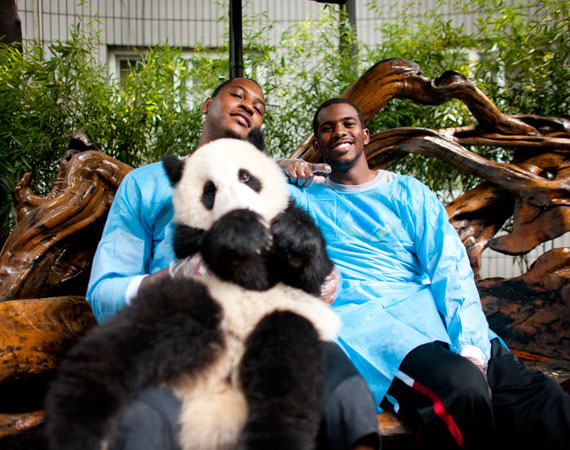
Chris Paul and Carmelo Anthony in 2011
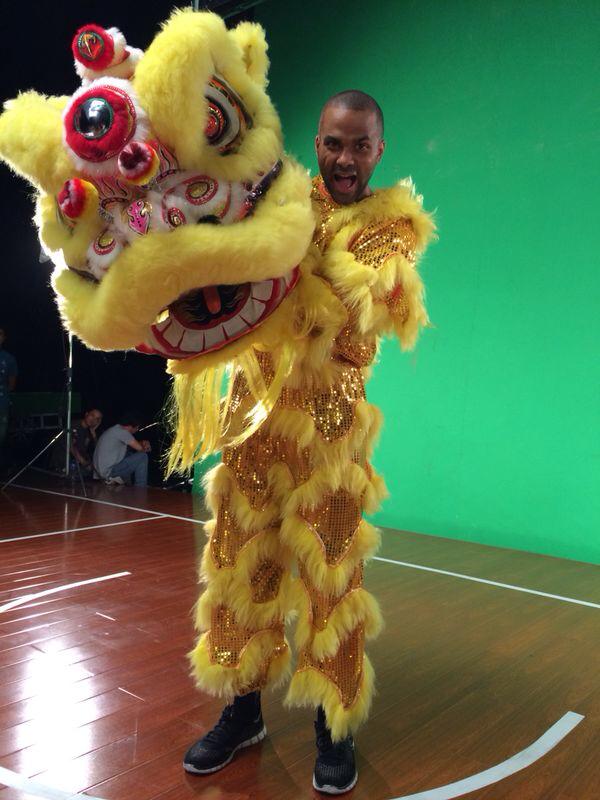
Tony Parker in 2014
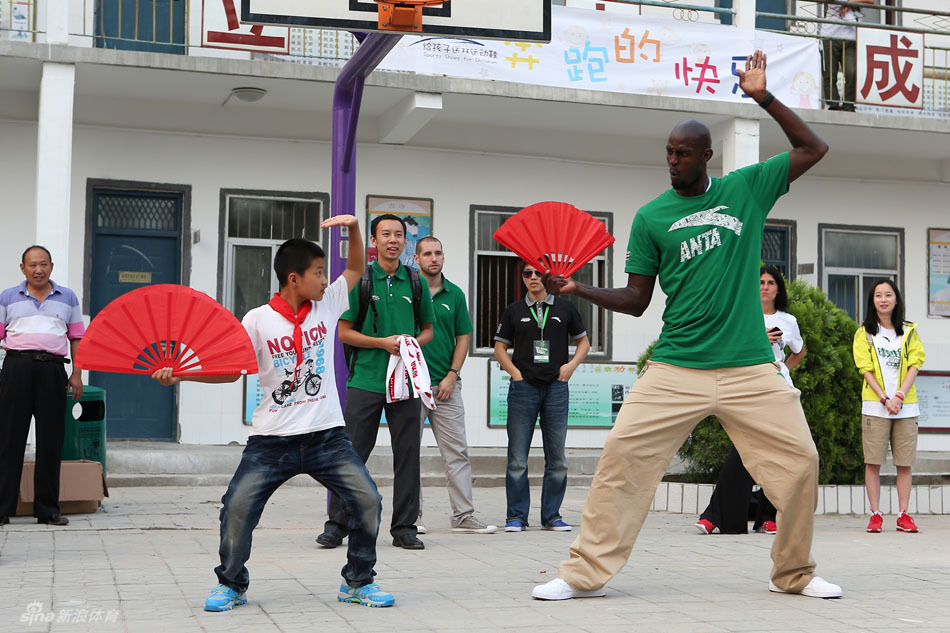
Kevin Garnett in 2012
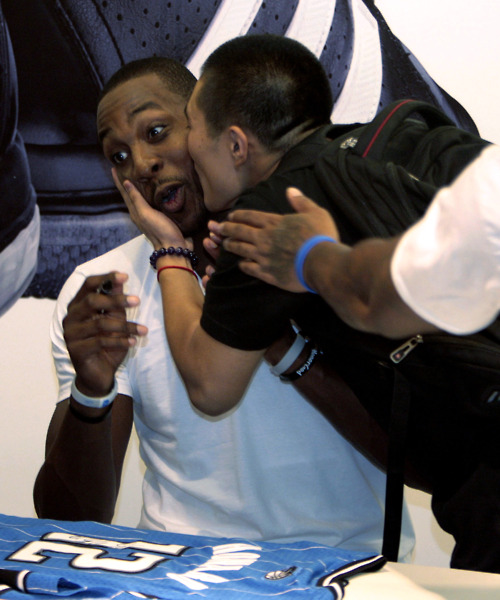
Dwight Howard in Nanjing in 2014
The increasingly sophisticated fanbase has allowed the league to thrive, even after Yao’s 2011 retirement. In 2014, the league had deals with Sina, Tencent and PPTV to stream games for free. “We have to continue to think of new ways to deliver NBA content to our fans and satisfy that voracious appetite they have,” Shoemaker humblebrags.
* * *
Ironically, while the game enjoys new heights in popularity, China’s celebrated basketball program is suffering as it moves away from a Soviet-style system of molding potential prodigies at a young age. The national team has become more known for fighting - with fisticuffs versus Georgetown University, Australia, Brazil and Serbia - and losing, including to an Italy team reduced to three players due to hilariously biased Chinese referees, and a humiliating defeat to India in 2014.
Increasingly, the NBA has gotten involved in developing grassroots basketball programs with Silver discussing with PRC Vice Premier Madame Liu Yandong on “our shared vision to promote youth basketball throughout China” during a Chicago Bulls game in November 2013.
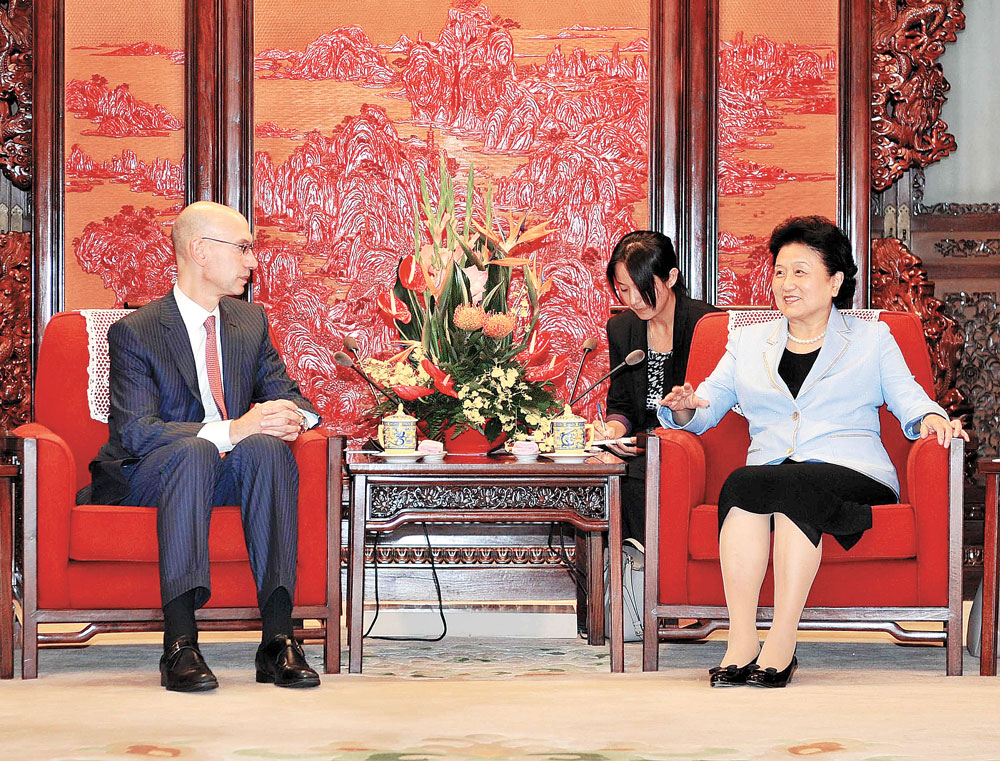
NBA Commissioner Adam Silver breaks bread with Vice-Premiere Madame Liu Yandong
There was even talk of a Chinese version of the NBA a few years ago, but this has dissipated, with the league content with collaborations. In 2011, the NBA opened up the world’s first year-round NBA training center with the CBA’s Dongguan Leopards. Reserved for elite youth players, the CBA Dongguan Basketball School has trained over 2,000 players and coaches, capturing the CBA’s U17 National Tournament Championship in March 2014.
Silver touts the vast possibilities provided by digital platforms. “Someone asked ‘Is Chris Paul going to come here to teach dribbling?’ I said ‘yes, through this device,’” he laughs, pointing to his phone.
“For any young boy or girl in China, or increasingly anywhere, who wants to learn the fundamentals of basketball, there should be an app presented by the NBA and its players to show them that.”
More traditional is the recently launched Yao School, a passion project for the star, who since retirement has campaigned to eliminate shark fin soup, opened a California winery, joined the Chinese People’s Political Consultative Conference (CPPCC) and enrolled at Jiaotong University, where photos confirmed that the big man, too, could be defeated by math.
READ MORE: Yao Ming Reflects on China's Basketball Past, Present and Future
The inclusive afterschool program combines basketball and life lessons for kids aged six to 16. Introduced in the summer of 2014, it was planned to expand to three locations that fall in Beijing with plans to take it nationwide within years. Rajon Rondo stopped by to lead workshops, and the NBA planned to make it a stop for visiting players.
“We feel it’s a bit of a differentiator for us,” Shoemaker says. “Kids want to learn from the NBA according to our curriculum. It’s more exciting for them to actually learn how to play the game from the best of the best.”
Stauskis knows first-hand what an increased NBA presence can mean. When the Toronto Raptors entered the league in 1995, it sparked an interest in the game that has resulted in a current crop of young Canadian talent, including recent NBA number one draft picks Anthony Bennett and Andrew Wiggins. Grassroots programs allowed Stauskis to share the court with NBA star Vince Carter as an eight-year old.
“Growing up, they didn’t have basketball on TV in Canada except for the Raptors,” he says. “As a young kid, it got me interested in the game and gave me something to look up to. I got an idea of what an NBA player looked like and it gave me something to work towards.”
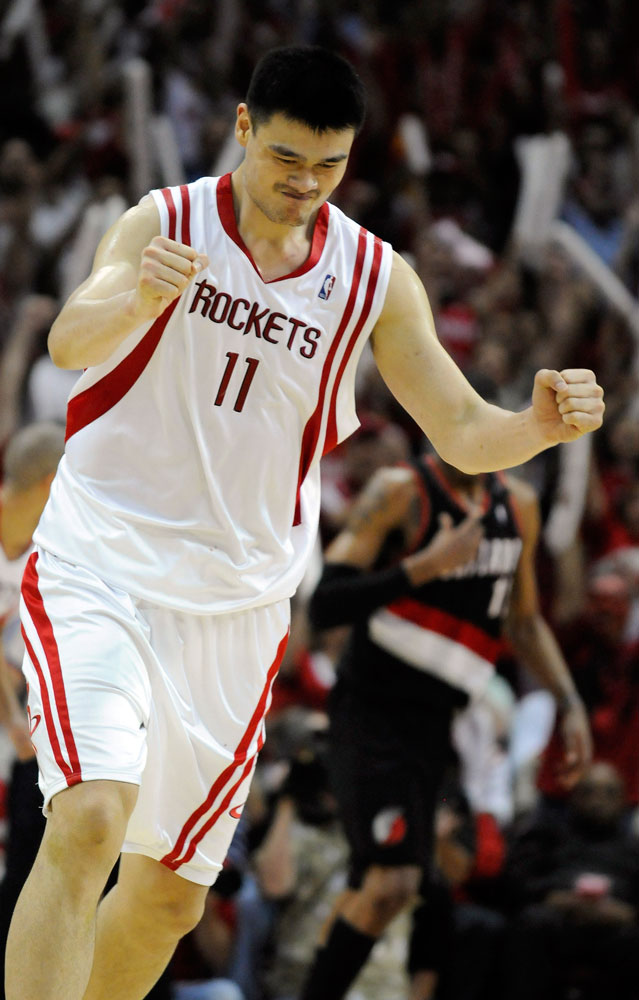
Yao Ming during his Houston Rockets days
While Shoemaker takes great measures to emphasize the Yao School isn’t designed to produce the next great Chinese player, Silver quips that “it would also be okay."
“Yao brought the NBA to a new level here,” he says. “I would love to see a pipeline of new Chinese players coming into the league.”
This article first appeared in the October 2014 issue of That's Shanghai. To see more Throwback Thursday posts, click here.





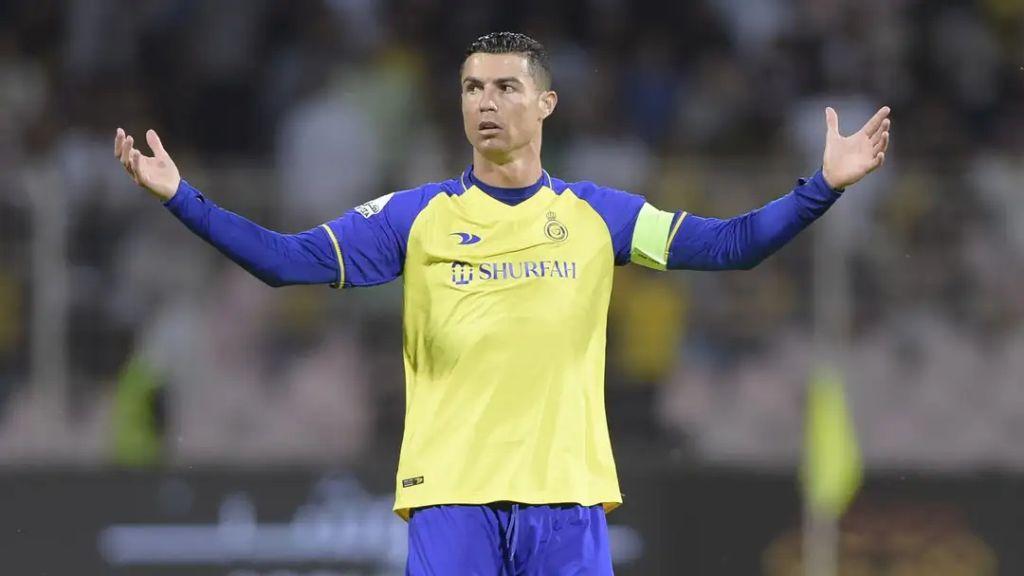
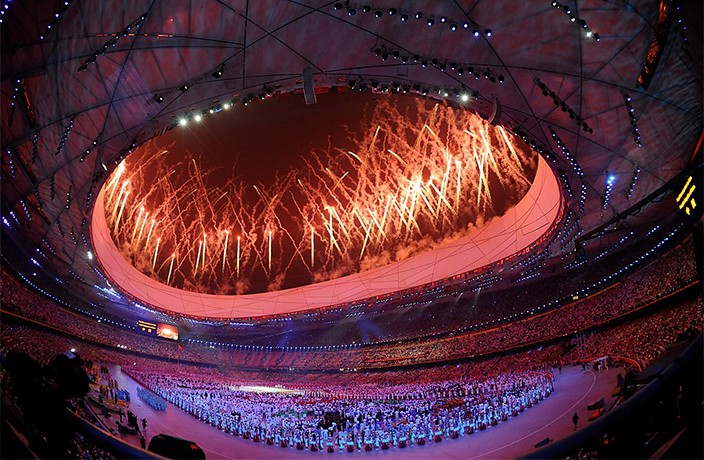
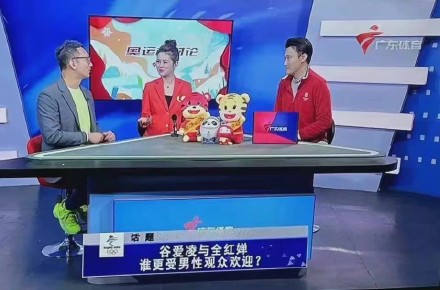











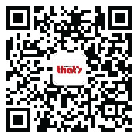


0 User Comments